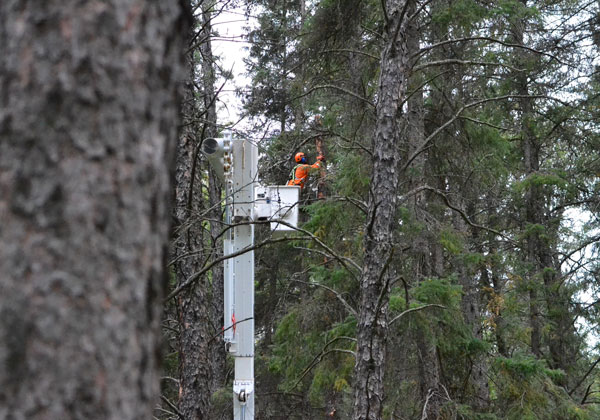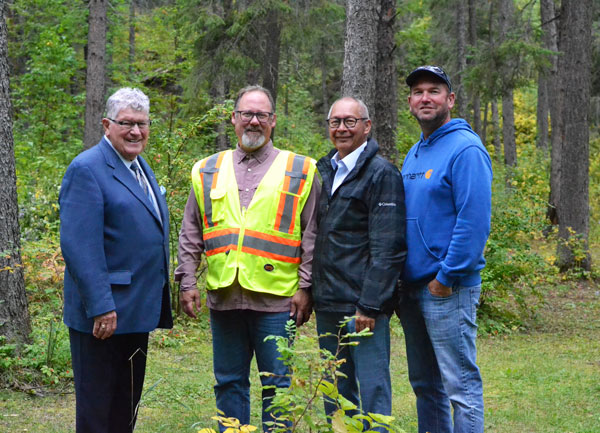
“we need to keep pushing forward and make a difference for the future.”
– Tim Yeaman, Parks Manager
The City of Prince Albert is working to reduce the risk of wildfire through sustainable forestry practices.
Several vegetation experts joined the city in Little Red River Park on Wednesday to demonstrate selective tree removal, mulling, basal treatments, aerials res work and mowing.
Prince Albert Parks Manager Tim Yeaman said there were about 100 people in total working in the park from 9 a.m. to 4 p.m.
It was open to the public in hopes of educating people on the importance of these practices.
“Any time we hold an event like this, I don’t think we should shy away from having the public here,” said Yeaman.
“If we’re not learning, we’re actually going backwards in my mind, so we need to keep pushing forward and make a difference for the future.”
Yeaman said he’s learning about the process as well, which includes not cutting aspen and poplar trees.
According to FireSmart Saskatchewan, leafy trees such as aspen, poplar, birch, ash and maple are resistant to wildfires. If one were to occur, they push the embers down and prevent it from spreading.
On the other hand, coniferous trees such as spruce, fir, pine and cedar are highly flammable.
Another practice is basal treatments. They’re applied to trees and shrubs with thin bark, which may be invasive, to slow their growth.
Yeaman wanted to emphasize that they’re not clearcutting in the park, just selective cutting. Clearcutting has been criticized by the public for a number of years for contributing to global warming and reductions in wildlife populations.
He said fire safe forest management will be done in the parks on a regular basis.

Eric Bullock, who specializes in vegetation management for SaskPower, said trees also need to be cut when they’re electrical hazards.
“We have bucket trucks out here that usually do the trimming around the power lines, typically in town or stuff that’s really close to the power line where we can’t even come close to touching it,” he said.
Heavy equipment operator and truck driver for Kitsaki Vegetation Services, Ralph McKenzie, said he’s “seen some pretty scary looking trees around power lines.”
Speaking to the Daily Herald at about noon, McKenzie said he hoped to see more people coming to see how they keep the forest maintained.
“It’d be nice to let people know what we’re doing and how stuff works and how dangerous it could be if we don’t do our job,” he said.
SaskPower also had mowing equipment that will turn the trees into mulch and, in return, protect the forest.
Mulch controls weeds, reduces nutrient leeching after it rains and improves root fertility.
Asplundh and Davey Resource group were also working in the park Wednesday.

